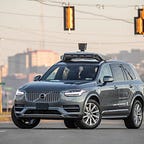Simulation: The Invisible Gatekeeper
At Uber Advanced Technologies Group (ATG), safety is at the core of everything we do. As part of our commitment to safety, we are investing heavily in simulation technology that enables us to test our self-driving system in a virtual environment before it ever reaches the road.
While you and I are driving, we encounter many challenging scenarios, and over time we build our experience for handling them. With simulation, we can test our technology virtually and make improvements to it before bringing it into the physical world, allowing our system to handle common scenarios better over time. With simulation, we continuously refine the system’s ability to drive, anticipate, and react safely.
What simulation looks like at ATG
At ATG, we strive to create the same reality in our simulator that our self-driving vehicle perceives in the real world. The capabilities of our cars and sensors are constantly measured and cross-checked in real life, and those measurements and capabilities are reproduced in the simulator.
Our testing scenarios are diverse and challenging; we have an independent team that is continuously expanding the test set based on what we learn on our test track and what we see from real road behavior. Every time any adjustment is made to the self-driving system’s software, it is automatically re-run against the full suite of simulation tests.
The power and purpose of simulation
Simulation is critical to the overall safety testing strategy for a number of reasons. It can reveal more potential issues — and earlier — than road testing can. It allows us to test complex and challenging scenarios, including ones that aren’t practical to test on the track or on real-life roads. Simulation also facilitates new development by letting us run early tests on new features, giving us the freedom to experiment and gather insights quickly.
Perhaps most importantly, simulation acts as one of a number of gatekeepers in our development process. Uber’s self-driving system must pass all tests relevant to an Operational Design Domain — the specific conditions under which the system is intended to function — in simulation before it “graduates” to the test track. It then has to pass all tests on the track without safety-related failures before it’s allowed on public roads.
The road ahead
Simulation serves many roles at ATG, but all of them allow us to maximize our efforts as we continue on our exciting journey of building safe, reliable self-driving vehicles.
